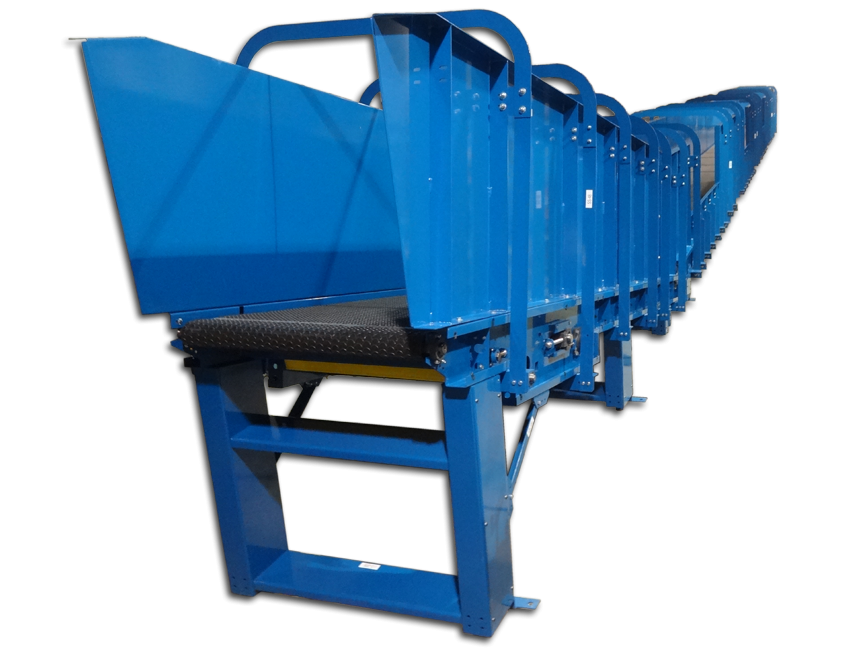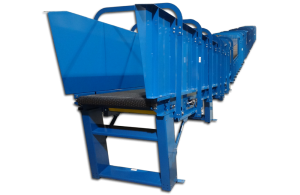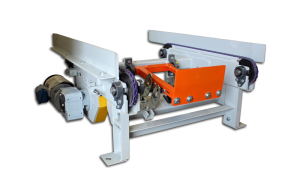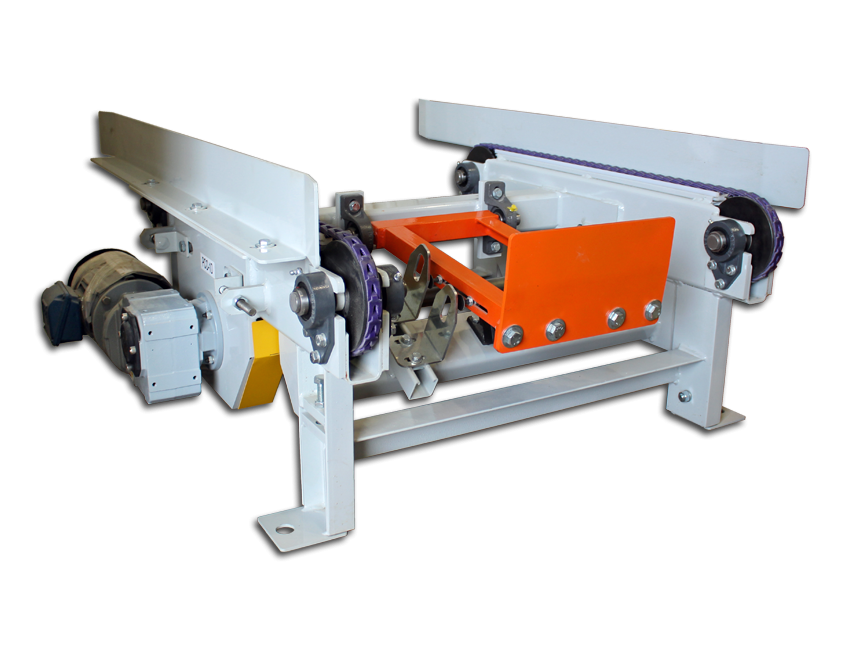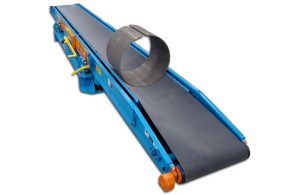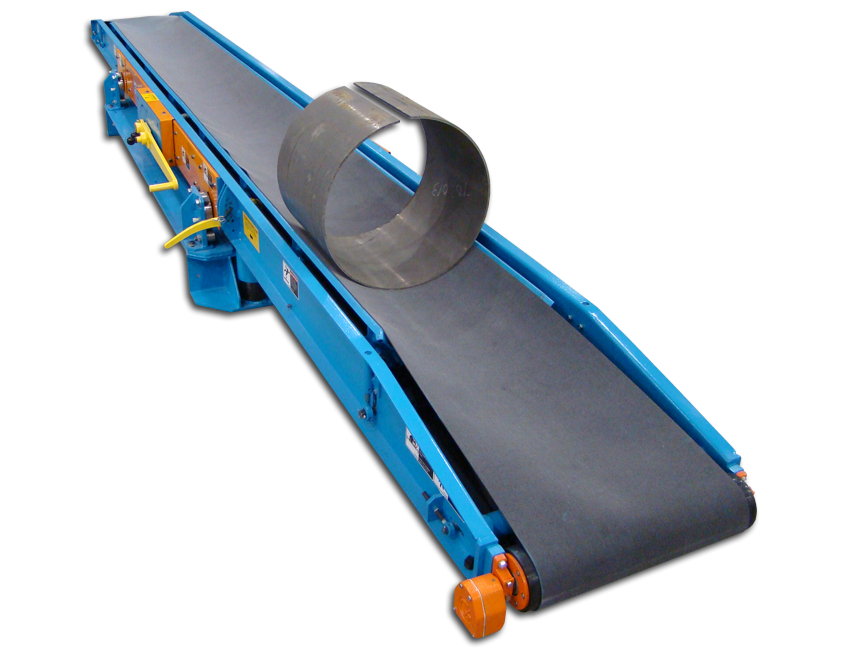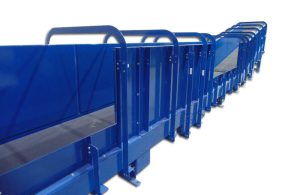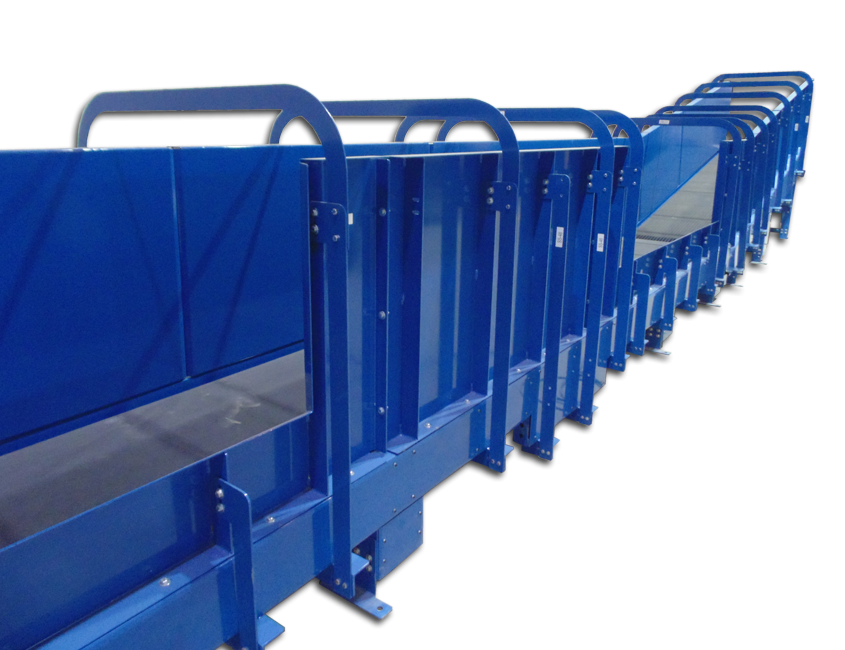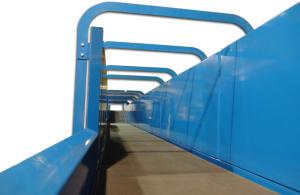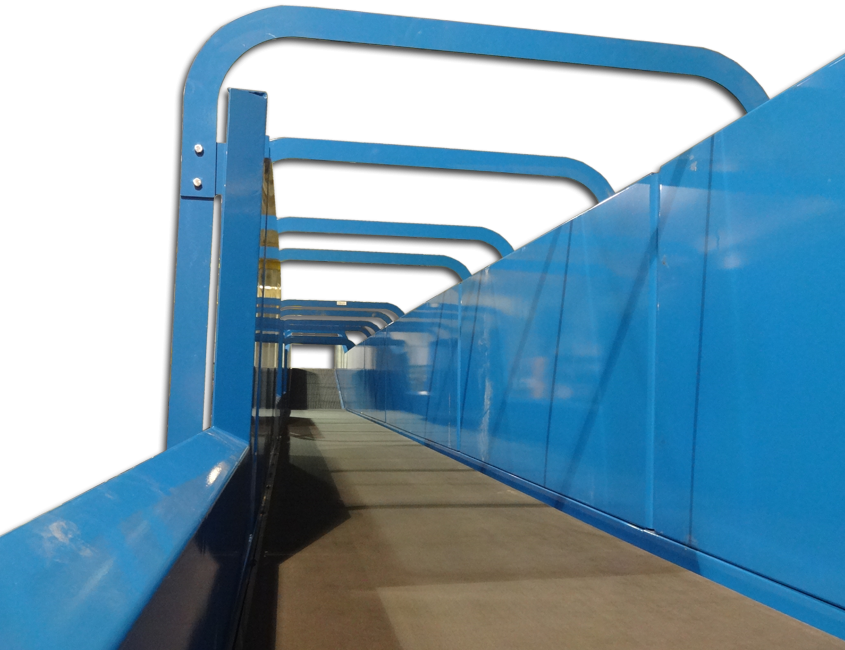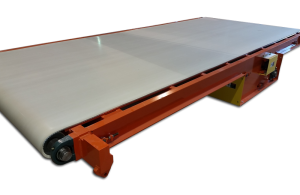Description
Belt conveyors have a belt running over a slider bed surface or a bed of rollers. Fabric belts are friction driven using a lagged drive pulley. Plastic and wire mesh belts are direct driven using drive shafts and sprockets. Flat, V-trough and adjustable beds are common requirements requested.
Belt conveyors are needed when conveying loose or small parts or when products do not have a flat bottom surface to convey. The belt helps to support the irregular shapes allowing them to be successfully transported down the conveyor.
Applications
Automotive – Tire, Seat, Powertrain
- Belt conveyors typically use a flat belt with a friction drive pulley and a take up pulley
- Belt conveyors with fabric belts can range from 6” wide up to 117” wide (3 meters) based on belt availability
- Standard belt speeds range from 10 to 200 fpm
- Special component options will allow belts to run as high as 400 fpm
- Fixed end pulleys help product transitions
Paper, Textile, Foam and Pipe Handling
- V-trough or profile beds assist in conveying round products like rolls of paper, cloth, foam and pipes
- With inner frame tilting capabilities, unloading to a perpendicular conveyor is easily managed
- Standard belt speeds range from 10 to 200 fpm
- Conveyors can be as short as 3’ long or run for 200’ in length
Stamping and Metal Processing
- Slider pans can be adjustable to support multiple size product diameters if required
- Beds can extend or retract for ease of die change out in stamping processes or for crossing aisle ways for continuous conveying
Options
- Belt type
- Roller or slider bed
- Purchase component brands
- Drive configurations
- Control packages
Downloads
Industries

